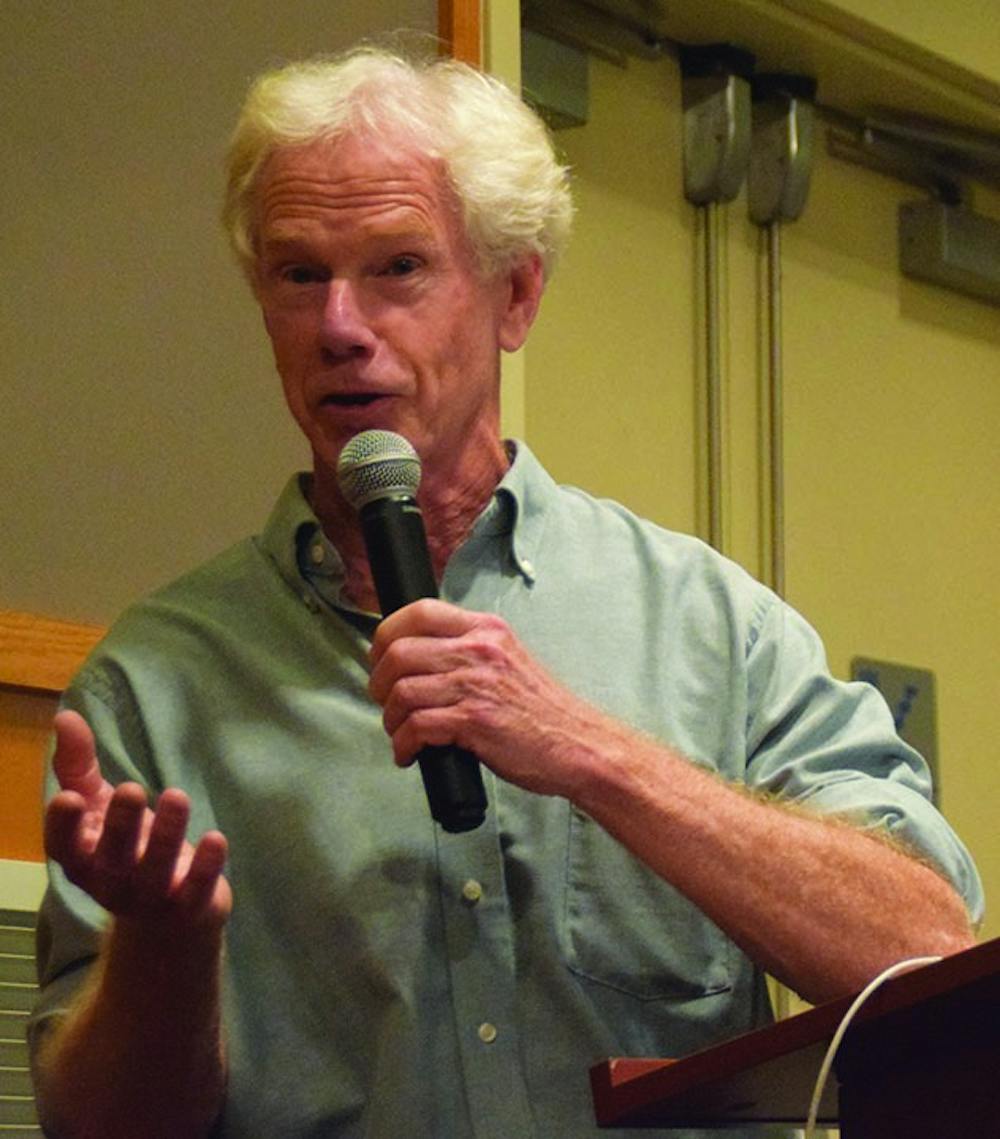With the Appalachian Trail just minutes from campus and the Blue Ridge Mountains surrounding Shippensburg University on both sides, it could be said SU is truly tucked into “Penn’s Woods.”
Hikers know the trail by its popular nickname, “The Green Tunnel,” a euphemism to the amount of coniferous trees you’re surrounded by during long hikes in the woods.
The encompassing scenery is something speaker Tim Palmer sought to capture in his presentation in the Orndorff Theatre Sept. 17. Brought to SU by the South Mountain partnership and curated by Katie Hess, the night included whimsical visuals of the forests, with a special focus on the hemlock tree.
Pennsylvania’s state tree is a “legacy of the deep past,” Palmer said, and spans 23 states across the country. They create cool environments for animals, so much so that trout used to be called hemlock trout. But the legacy of the hemlock might soon be coming to an end. In a large area of the eastern U.S., the species is endangered.
Hemlock’s are facing a threat called the woolly adelgid, an insect spreading through the trees and leaving devastation in its path, according to Palmer.
“How long does it take for a hemlock tree to die once it’s infected? It can be as short as a few years. Some of them hang on longer. They go pretty quickly,” he said.
Multiple treatments for the adelgid exist, and hemlocks in developed areas are treated with insecticidal soap or horticultural oils. There is also the possibility of releasing certain beetles into hemlock forests, which are natural predators to the woolly adelgid.
However, these treatments are expensive and public support for saving the state’s hemlock forests is low.
“I would like to make a pitch for public support of funding for these kinds of programs. In my book, when the adelgid was ramping up, the managers in Great Smoky National Park wanted a deal, and they managed through hook and crook to squeeze 40K out of their budget,” Palmer said. “The same year, Congress appropriated $3 million to study a new freeway to go over the Smoky Mountains, which if built would cost $200 million. That just tells you something about our priorities, about Congress’s priorities.”
An audience member commented, “Ignorance is bliss. People that go to the forests to recreate, they don’t want to be bothered by all of the downers. So enlightenment is depressing and the people who want to go out for a weekend, they’d rather not know about those things, so long as there’s a forest there.”
But with the forests so close to Shippensburg, watching the forests slowly die is simply not an option, Palmer said.
Getting involved is always the first step in saving the state tree and preserving the state’s beautiful forests. Students are encouraged to join the campus environmental/SEAS club or the adventure club.
“We have to work at getting kids outdoors, so that love of nature is strong enough to carry us through,” Palmer said.
Students can also join South Mountain partnership on Tuesday, Nov. 20, in Reisner Dining Hall for a day-long workshop catering to anyone who wants to be able to fund, design, construct or maintain trails. Fewer than 100 spots are available, so students are encouraged to register as soon as possible.




The Slate welcomes thoughtful discussion on all of our stories, but please keep comments civil and on-topic. Read our full guidelines here.